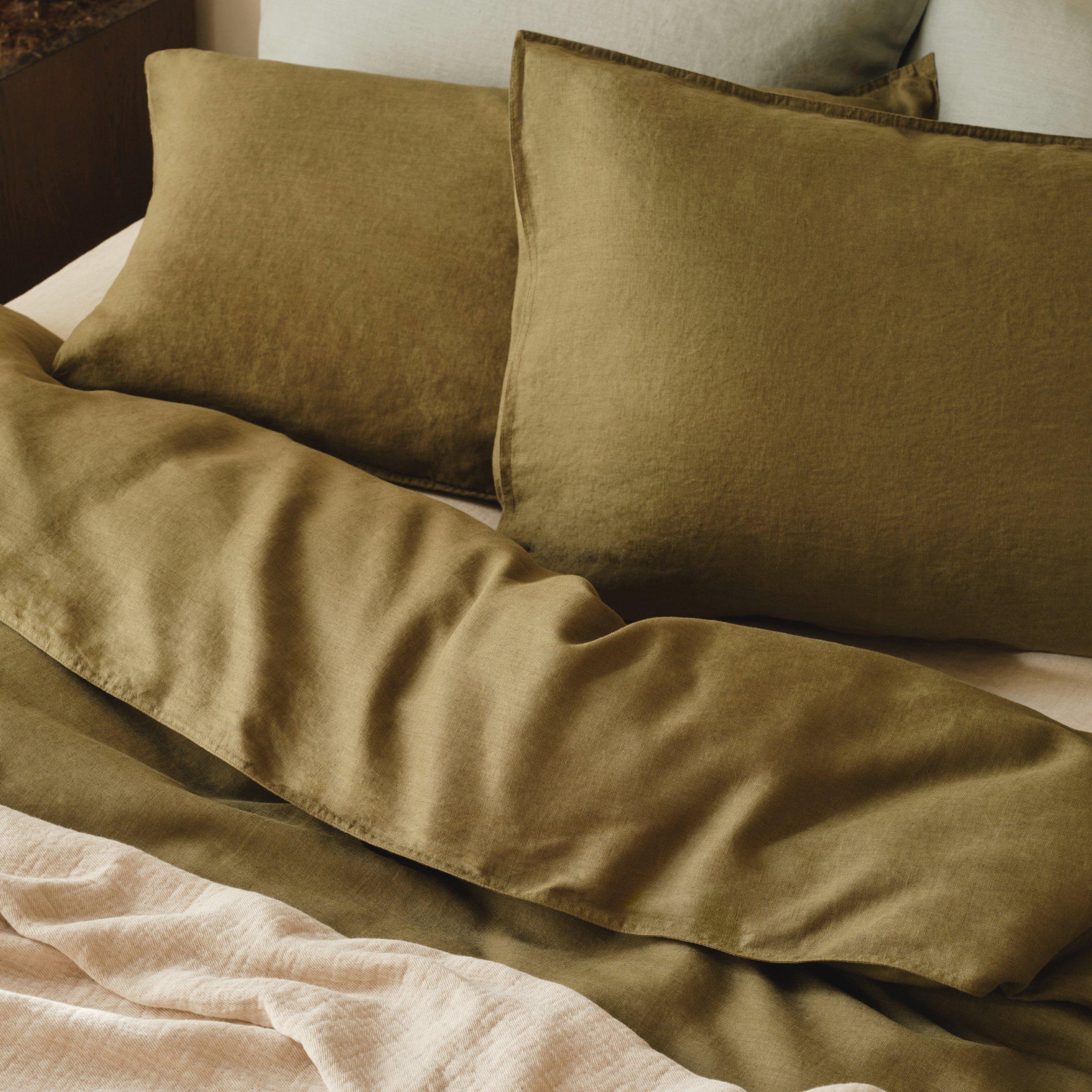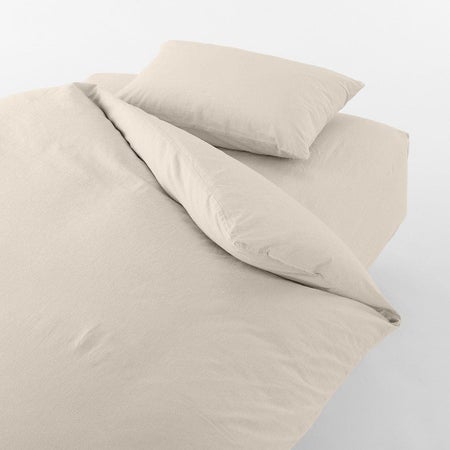Linenshed Tips: Caring for Your Linen the Easy Way
Linenshed Tips: Caring for Your Linen the Easy Way
Blog Article
Recognizing Linen: The Eco-Friendly Choice for Comfortable Living
When you think regarding eco-friendly textiles, bed linen often sticks out for its one-of-a-kind high qualities. This all-natural fabric, made from the flax plant, provides both convenience and sustainability. Its remarkable properties make it a perfect option for cozy weather condition and durable usage. What truly establishes linen apart from other products? Understanding its origins and benefits can transform exactly how you watch home textiles. Allow's explore the fascinating world of linen further.
The Origins of Bed Linen: From Flax to Fabric

Linen, among the earliest textiles known to mankind, has a fascinating journey that begins with the simple flax plant. You may be surprised to learn that this plant flourishes in awesome environments, prospering in areas like Europe and components of Asia. Once gathered, the flax stalks undertake a procedure called retting, where they're saturated to divide the fibers from the woody parts. After retting, the fibers are combed and rotated right into yarn, prepared for weaving.
When you see linen textile, you're observing centuries of craftsmanship. The weaving procedure transforms those spindles of thread right into the attractive, long lasting cloth you love. Linen has actually been valued for its natural appearance and feel, making it a favorite for whatever from garments to home textiles. So, following time you touch bed linen, remember its abundant background that links you to ancient cultures and their typical methods - Australia Linen.
The One-of-a-kind Residence of Linen
Among the standout attributes of this impressive fabric is its breathability. When you wear bed linen, you'll observe how it permits air to distribute, maintaining you cool on warm days. This property makes it a best choice for summer season garments and bed linens.
Bed linen also flaunts outstanding moisture-wicking abilities, drawing sweat away from your skin and enabling it to evaporate promptly. You won't really feel clammy, even in humid conditions. Furthermore, bed linen is sturdy, commonly becoming softer and a lot more comfortable with each laundry, which means it can stand the test of time in your wardrobe.
Another special aspect is its natural structure; the slight abnormalities give bed linen a character that boosts your design. Plus, it resists wrinkles better than numerous various other textiles, so you can enjoy a kicked back yet brightened appearance without much effort. Accept bed linen, and you'll appreciate its comfort and special beauty.
Ecological Benefits of Linen
When you choose linen, you're not just opting for a gorgeous material; you're also sustaining sustainable production techniques. Bed linen's eco-friendly and compostable nature makes it a smart selection for the setting. And also, it requires considerably less water to produce compared to various other fabrics, aiding save this valuable resource.
Lasting Manufacturing Practices
Although lots of materials have significant environmental effects, linen stands apart because of its sustainable production practices. When you select linen, you're opting for a fabric made from the flax plant, which requires minimal water and chemicals. This resistant plant can flourish in poor soil problems, lowering the need for chemical fertilizers. Additionally, the whole flax plant is utilized in production, decreasing waste and promoting source performance.
Linen manufacturing is usually less energy-intensive contrasted to other textiles, as it includes natural processes as opposed to synthetic treatments. By supporting bed linen, you're contributing to an extra sustainable fabric industry that focuses on environment-friendly methods. Selecting bed linen not just boosts your convenience however also straightens your values with ecological obligation.
Eco-friendly and Compostable Material
Linen's environmentally friendly nature extends beyond its sustainable manufacturing; it's compostable and also eco-friendly, making it a superb option for eco aware customers. When you pick bed linen products, you're opting for products that damage down naturally, returning nutrients to the earth. Composting bed linen can enhance dirt, advertising healthy and balanced plant growth.
Low Tide Consumption
One of the standout benefits of bed linen is its low water consumption throughout cultivation. Unlike cotton, which calls for considerable watering, bed linen's flax plant flourishes on marginal water, making it an extra lasting option. You'll appreciate recognizing that for every ton of linen generated, considerably less water is needed compared to several other textiles.
Bed linen vs. Other Fabrics: A Contrast
When you contrast bed linen to various other materials, you'll discover its remarkable breathability and comfort, making it best for cozy weather. And also, linen stands apart for its resilience and long life, frequently lasting longer than lots of generally utilized materials. As you consider your options, the environmental impact of each material will additionally play a vital role in your decision.
Breathability and Convenience
Linen stands out among materials for its remarkable capacity to allow air circulation. Unlike synthetic fabrics, which can catch warmth and wetness, linen's all-natural fibers wick away sweat, keeping you dry and awesome.
Cotton is usually praised for its gentleness, but it does not match bed linen's breathability. Also blends could not provide the same ventilation. If you focus on comfort, especially in summer season, linen ought to be your best choice. It not just keeps you feeling fresh however also brings an ageless elegance to your wardrobe.
Durability and Long Life
While numerous materials provide differing levels of resilience, bed linen truly excels in long life, making it a sensible financial investment for your wardrobe. Unlike cotton or synthetic materials that may wear out swiftly, bed linen obtains stronger with each wash. You'll locate that linen's breathable nature likewise minimizes wear from sweat and dampness, which can damage other materials.
Environmental Impact Comparison
Although numerous materials contribute to environmental issues, linen stands apart for its eco-friendly qualities. Unlike cotton, which requires huge water resources and chemicals, bed linen is made from flax, a plant that flourishes on marginal water and needs fewer chemicals. This suggests you can really feel excellent concerning your option while decreasing your carbon impact.
When compared to synthetic textiles like polyester, bed linen's biodegradability beams. While polyester can take centuries to break down, bed linen breaks down normally, returning nutrients to the dirt.
Selecting bed linen not just promotes sustainable farming techniques however additionally supports a healthier planet. By going with bed linen over conventional fabrics, you're making a conscious choice that benefits both your convenience and the setting.
Caring for Your Bed Linen Textiles
To guarantee your bed linen textiles continue to be in excellent problem, you'll intend to follow some simple treatment guidelines. Clean your linen in cold water on a mild cycle to stop it from shrinking or shedding its form. Prevent using bleach, as it can harm the fibers. Rather, choose a moderate detergent that's without extreme chemicals.
When it comes to drying, air drying out is finest. Pick a reduced heat setup and remove the items while they're still somewhat damp to minimize wrinkles if you use a dryer. Iron the bed linen while it's still damp for less complicated handling, or steam it to keep it looking crisp.
For storage space, maintain your linen in a trendy, completely dry place. Prevent straight sunlight to avoid fading. With these easy practices, your bed linen textiles will preserve their elegance and last for years, making them a sustainable addition to your way of life.
Integrating Bed Linen Into Your Home Décor
Looking after your linen fabrics not just maintains their quality but likewise opens up a world of possibilities for incorporating them right into your home décor. You can start small by including bed linen toss cushions to your sofa, my latest blog post instantaneously raising the space with texture and heat. Think about bed linen drapes that filter sunlight magnificently, producing a soft, airy environment in any room.
For a more rustic look, try making use of bed linen tablecloths or runners throughout meals; they include a stylish touch and are easy to clean. If you're really feeling adventurous, mix and match different bed linen colors and patterns to develop a special, layered impact.
Don't forget bed linen coverings-- curtain one over a chair or your bed for an inviting feel. By thoughtfully integrating linen right into your décor, you enhance both convenience and style, making your home a calm resort.
The Future of Linen in Sustainable Living
As customers significantly prioritize sustainability, linen arises as a frontrunner in green fabrics. Its production utilizes less water and chemicals contrasted to conventional cotton, making it a more eco accountable choice. As you look in the direction of a sustainable future, incorporating bed linen into your wardrobe and home can considerably reduce your carbon footprint.
Cutting-edge brands are currently concentrating on sustainable methods, from using organic flax to applying circular economic climate concepts. You'll find that bed linen's toughness suggests it lasts longer, lowering the requirement for regular substitutes.
Moreover, as even more people accept minimal way of lives, bed linen's ageless appeal and versatility will maintain it appropriate. By choosing linen, you're not just choosing convenience; you're also sustaining lasting methods.
In the upcoming years, the need for bed linen is anticipated to expand, solidifying its location in a much more eco-conscious globe. Consider making bed linen a staple in your sustainable living journey.
Regularly Asked Questions
Is Linen Suitable for People With Allergies?
Yes, linen's natural fibers are hypoallergenic, making it suitable for people with allergies. Its breathable nature assists lower wetness and germs build-up, contributing to a much healthier resting setting. You'll likely find it comfortable and risk-free.
Can Linen Be Colored Easily?
Yes, you can color bed linen quickly. Its natural fibers absorb dyes well, permitting vibrant shades. Simply ensure you utilize the best color kind and comply with correct methods to see here now accomplish the wanted results without damaging the fabric.
How Does Linen Contrast in Sturdiness to Cotton?

What Weight of Linen Is Ideal for Summertime Apparel?
For summer season apparel, light-weight linen around 4 to 5 ounces per yard is excellent. It keeps you awesome, breathable, and comfy in warm weather (Linen Australia). You'll value how it drapes and actions with you effortlessly

Can Linen Be Used for Outdoor Furniture?
Yes, you can make use of linen for outdoor furnishings. It's long lasting and breathable, making it a wonderful option for cozy climate. Just make sure to select a dealt with variation to endure the aspects and maintain its appearance.
Conclusion
Including bed linen right into your life not just boosts your convenience but additionally supports a much more lasting future. With its unique residential or commercial properties and marginal ecological influence, linen is a clever selection for your home decoration and way of life.
Bed linen's biodegradable and compostable nature makes it a clever option for the environment. By integrating bed linen into your home, you're not simply enjoying its convenience and look at this website sturdiness; you're also supporting eco-friendly techniques and assisting develop a much healthier planet. The Future of Linen in Lasting Living.

Report this page